What do Jack Daniels and the Sacred Valley Have in Common?
If you haven't drunk chicha, then you haven't experienced the Sacred Valley
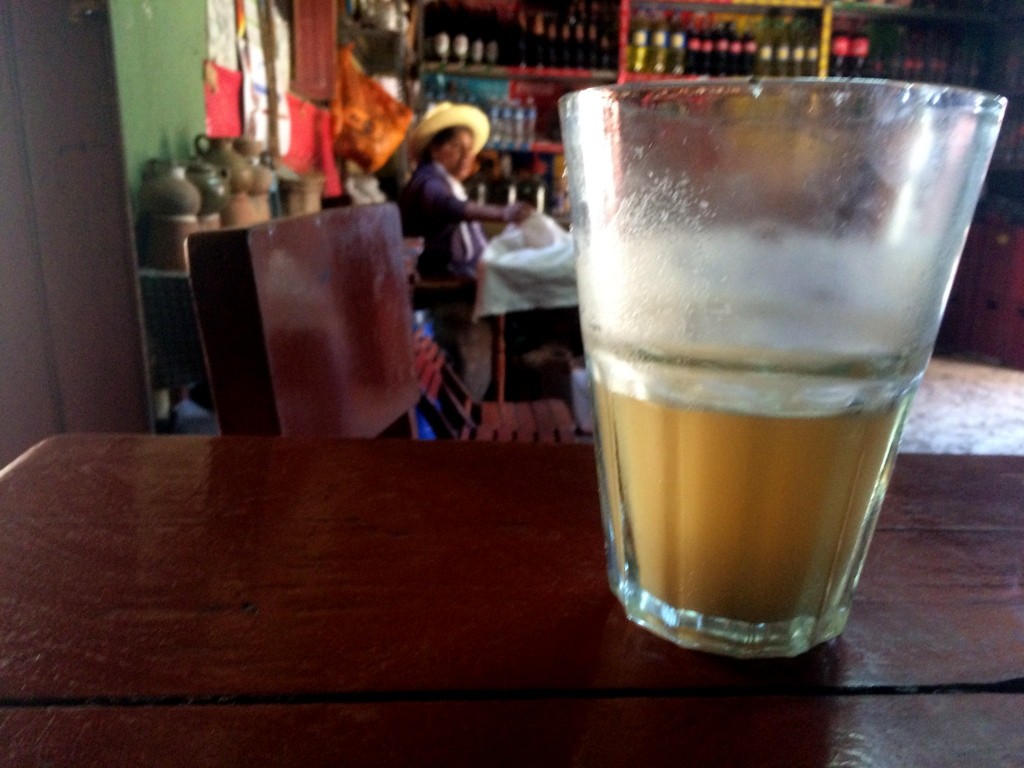
Local watering hole
After some posts centered on the socioeconomic conditions in rural Peru, it's now time to address a topic of real importance.
What do they drink in Peru?
To begin with, sugar is the name of the game down here. Few beverages can be viewed as complete without a boatload of extra sugar dumped in. Consequently, soda (known here as "gaseosa") is very popular. There is, of course, the standard line-up of Coca-Cola products that are bottled in Peru. If you buy these in glass bottles, you need to either drink it on the spot or pay a hefty deposit on the bottle. This is because the bottles are not recycled, they are washed and re-used. While some flavors that have been extinct for many years in the states, like Tuti-Fruti, still exist here, the hands-down soft drink of choice is “Inca Kola” (a bubblegum-flavored bright-yellow syrupy concoction which is sweeter than anything you’ve ever tasted in your life.)
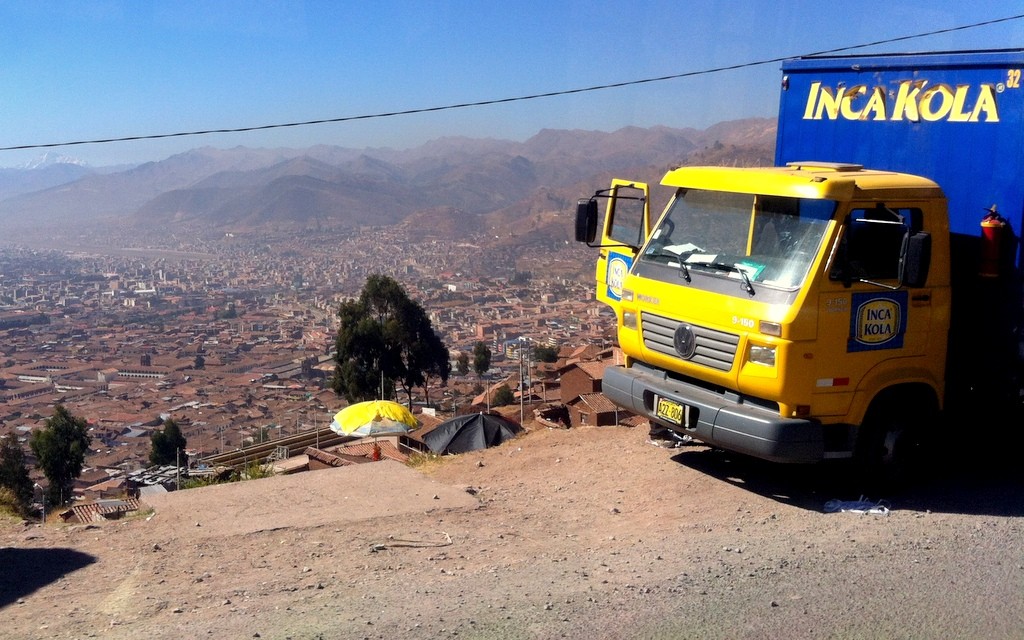
While soda is well-liked by all, it is also pretty expensive. Thus, most people make their own chicha morado. It is made by boiling a variety of dark purple corn in water (along with a little cinnamon, pineapple rinds, apples, and whatever else looks tasty) until the water turns a deep purple color. Subsequently, the
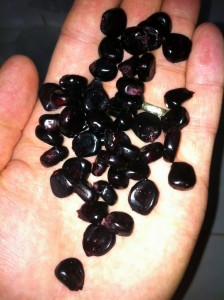
requisite boatload of sugar is added and then the drink is chilled to enjoy later. Doctors say that chica morado is great for reducing blood pressure and some people are looking into exporting it for that reason.
Beer is also available, and is drunk in large quantities at religious festivals, but it is actually rather expensive and the selection is limited.
While you can definitely enjoy any of the above beverages in the Sacred Valley, the most widely consumed beverage, by far, (doubtless exceeding water) is called chicha. This is not to be confused with chicha morado or chicha de quinoa or any of the other drinks with chicha in their names. This is just plain old chicha (or sometimes chicha de jora if you want to be precise).
One of the first things that any observant traveler wandering the narrow streets of a small town in rural Peru will notice is that nearly every street has at least one, often two or three, houses with a long pole sticking out over the street with a small red garbage bag tied to the end of it.
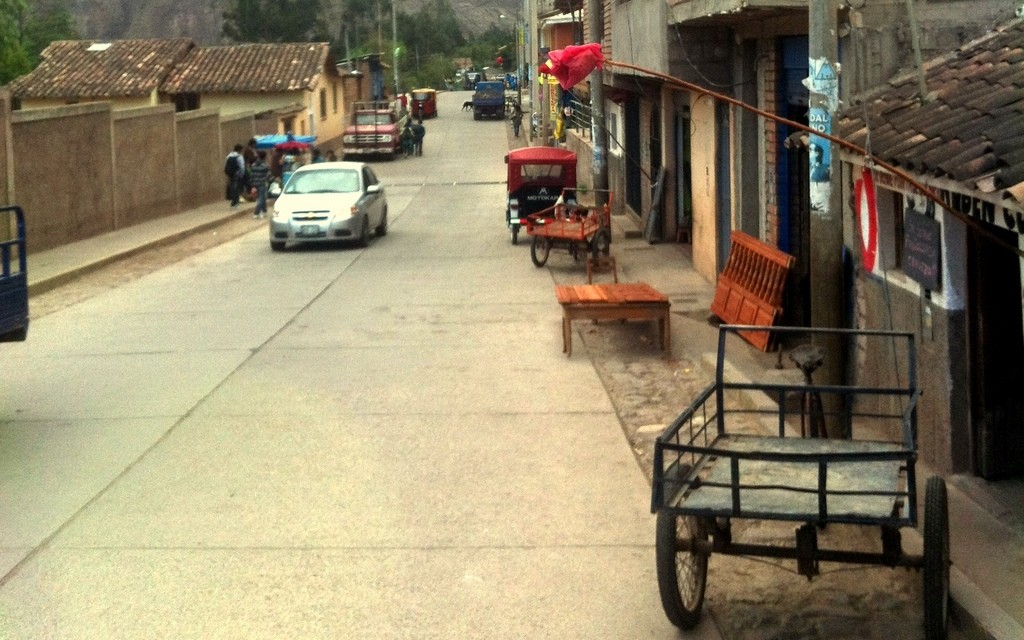
If you look closely, you can make out 3 chicha flags winin about 50 yards
If that observant traveler were to boldly walk into one of these houses, after sidestepping the chickens and cuyes running around, he would likely see a huge clay pot filled with a frothy foamy sour smelling (and tasting) liquid. If he were to pay the owner of the house about 20 cents, they would give him a gigantic glass full of this frothy tart liquid called chicha, which he would gulp down before continuing on his way. The doctors here claim that drinking chicha is good for your prostate. Who knew?
So what exactly is this frothy foamy stuff? This is what I endeavored to find out. The following (as well as an exceptionally healthy prostate) are the results of my painstaking research.
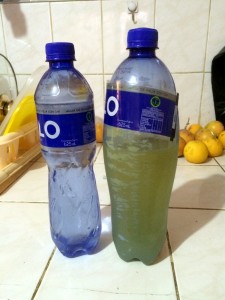
The fermentation builds
pressure that will cause
it to burst.
The formation of ethanol (drinking) alcohol is typically the result of a biological process in which yeast cells consume simple sugars and convert them into carbon dioxide and alcohol. If you let all of the carbon dioxide escape you end up with a flat drink such as wine. If you cork the sugary mixture right at the beginning of fermentation, you end up with a nearly nonalcoholic drink like homebrewed soda pop. If you cork the fluid in mid-fermentation, or near the end of fermentation you end up with a fizzy alcoholic drink like champagne or beer.
Chicha is typically never allowed to pressurize so it is never as effervescent as beer or champagne. Unlike wine, however, Chicha is served in mid-fermentation. Thus it is somewhat frothy and bubbly and has a yeasty flavor.
If you are attempting to make wine or champagne, all you need to do is add some yeast to some grape juice and away it goes.
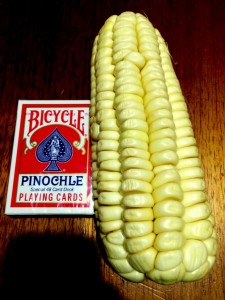
often grown in Peru has
HUGE kernels.
This is because grapes are loaded with natural sugars for the yeast to consume and turn into alcohol. But what if you live at 10,000 ft elevation in the Andes Mountains and your vineyard isn’t exactly flourishing? In that case, you start looking for something else to feed your hungry yeast. And your eye happens to fall on the bag of dry corn sitting in the corner. Hmmm.
Assuming you lived in the Sacred Valley in the year 1500 AD (the ancient Incas actually had chicha factories) and you had a pretty good knowledge of chemistry, let’s say you happen to know that corn is made up of starches. And you also know that starches are nothing more than a bunch of simple sugar molecules stuck together in long chains. Yeast cells love to eat simple sugars, but can’t break down starches. Hmmmm
So you decide to talk to your pal who is in charge of the agricultural lab in the small town of Maras (This is no joke, archeologists have uncovered a huge Incan agricultural research center near the present-day town of Maras.)
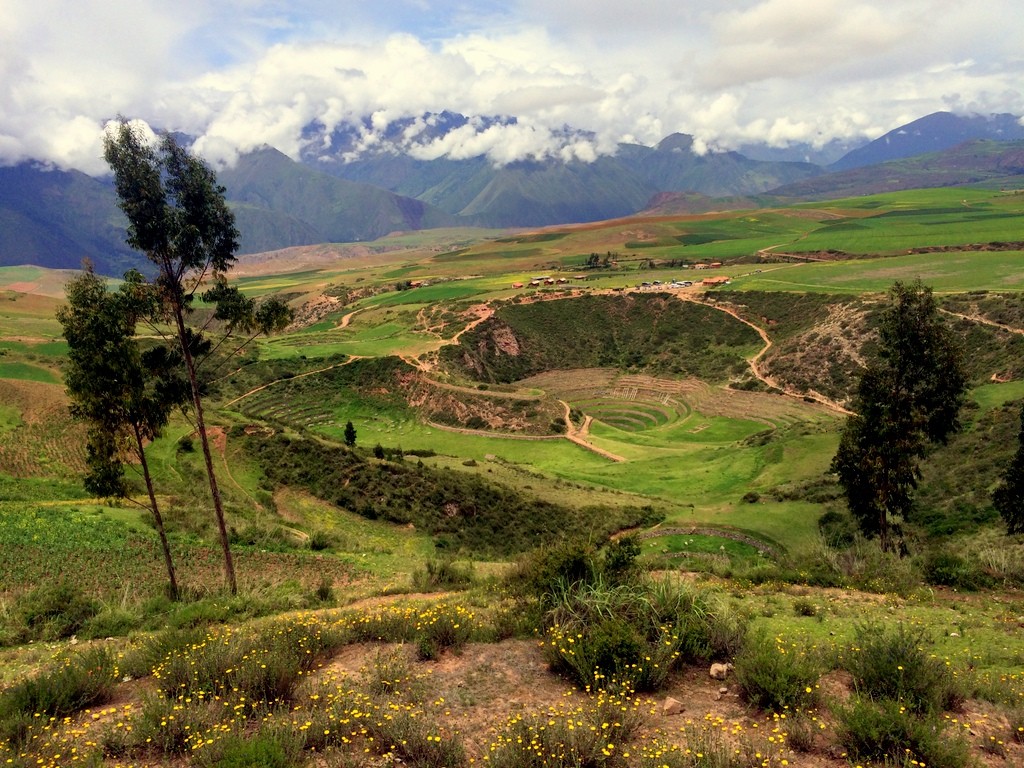
He informs you that, in order to grow; tiny little plants need a supply of sugar from the seed in order to give them a good start in life until they can start making their own sugars using photosynthesis. The trouble is that sugar doesn’t store very well. Therefore, plants store starches in their seeds, and then when the little seeds start to sprout, they make some enzymes that start to break down the starches into simpler sugars that the tiny little plant can use. Hmmm.
So now you have your plan. First, you soak your corn kernels in water until they start to sprout. Now you know that they have a bunch of enzymes that are breaking down the starches in the corn into simple sugars. But you don’t want the plants to eat the sugars, you want your yeast to eat the sugars. So you put the little sprouts out in the sun until they dry out and the sprouts die. Then you grind them all up, mix them with water, and start cooking them. The enzymes from the corn sprouts rapidly start breaking down the starches into simple sugars (incidentally, a very similar process is used to make corn syrup). Now that you have a big pot of simple sugars and water all that you have to do is throw in some yeast and away it goes!
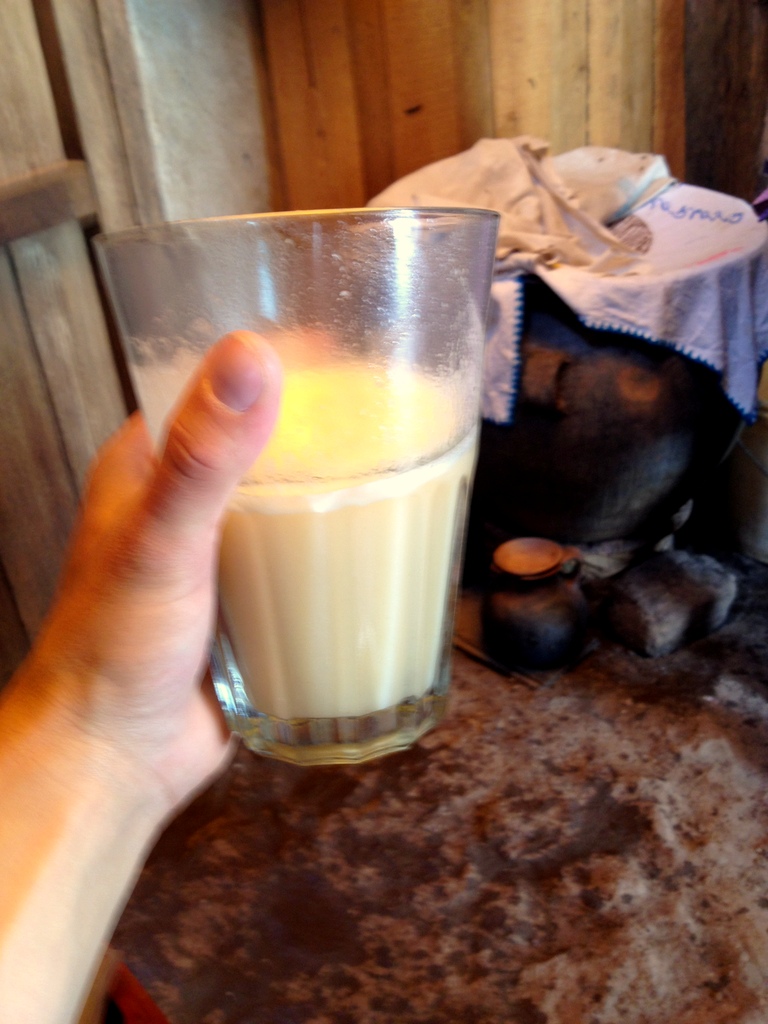
(sorry about my big hand in the foreground)
The large clay pot in the background is full of chicha. The blankets draped over the top of the pot are to keep the flies out.
Traditionally, folks wait about three days to drink the chicha. The fermentation is not entirely complete at this point (as the yeast has not been able to consume all of the sugars) so it is still foaming and slightly carbonated when you drink it. Also, some people will mix in a few strawberries and sugar just before consumption to make a product called frutillada (this drink typically costs 30 cents instead of 20). Incidentally, in the United States, a similar process is used to make what amounts to chicha (mash beer). This is then distilled to make bourbon whiskey. So there’s your answer to the question in the title of this blog post.

So next time you’re wandering through the towns and villages of the Andes and you find yourself tired and thirsty, just look around for the little red garbage bags on the end of long poles. If you are willing to acquire a taste for the sourdough of beers, I highly recommend the naturally fermented, home-brewed, deliciously corny taste of CHICHA!
